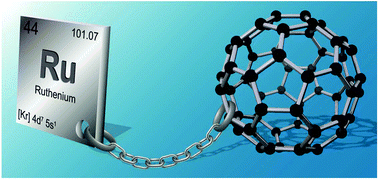Hybrid materials based on ruthenium and fullerene assemblies
Abstract
This review provides a detailed overview about the synthesis, properties and applications of all ruthenium-fullerene compounds reported within the last 25 years. The incorporation of ruthenium centers into fullerene compounds by organometallic, covalent or non-covalent bonds has led to a broad range of useful hybrid materials. By this approach novel compounds could be generated that feature the electron-donating and electron-accepting character of ruthenium complexes and fullerenes, respectively. Intramolecular interactions between both units could result in new, combined properties that were studied in the spotlight of emerging applications, such as photovoltaics or catalysis.


 Please wait while we load your content...
Please wait while we load your content...